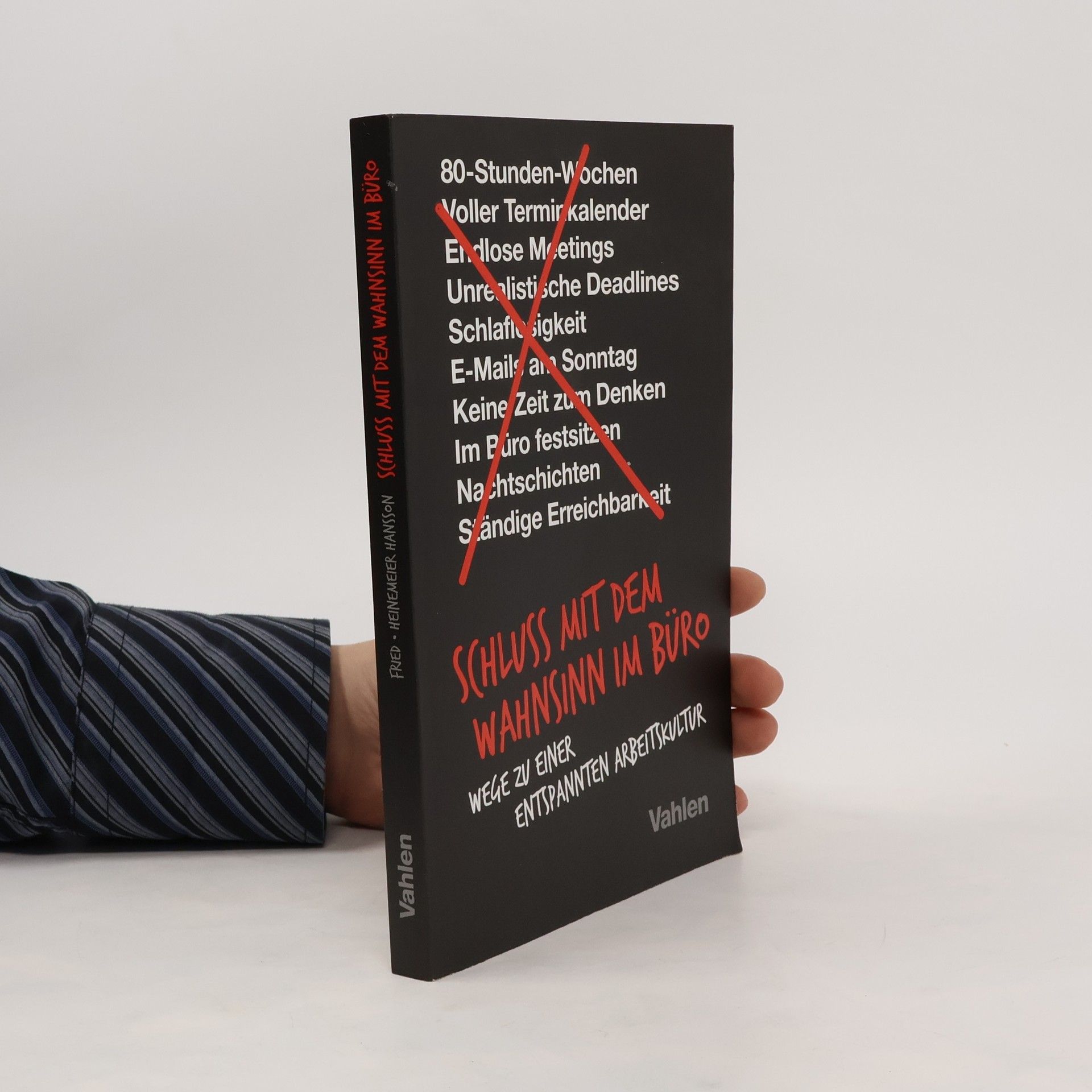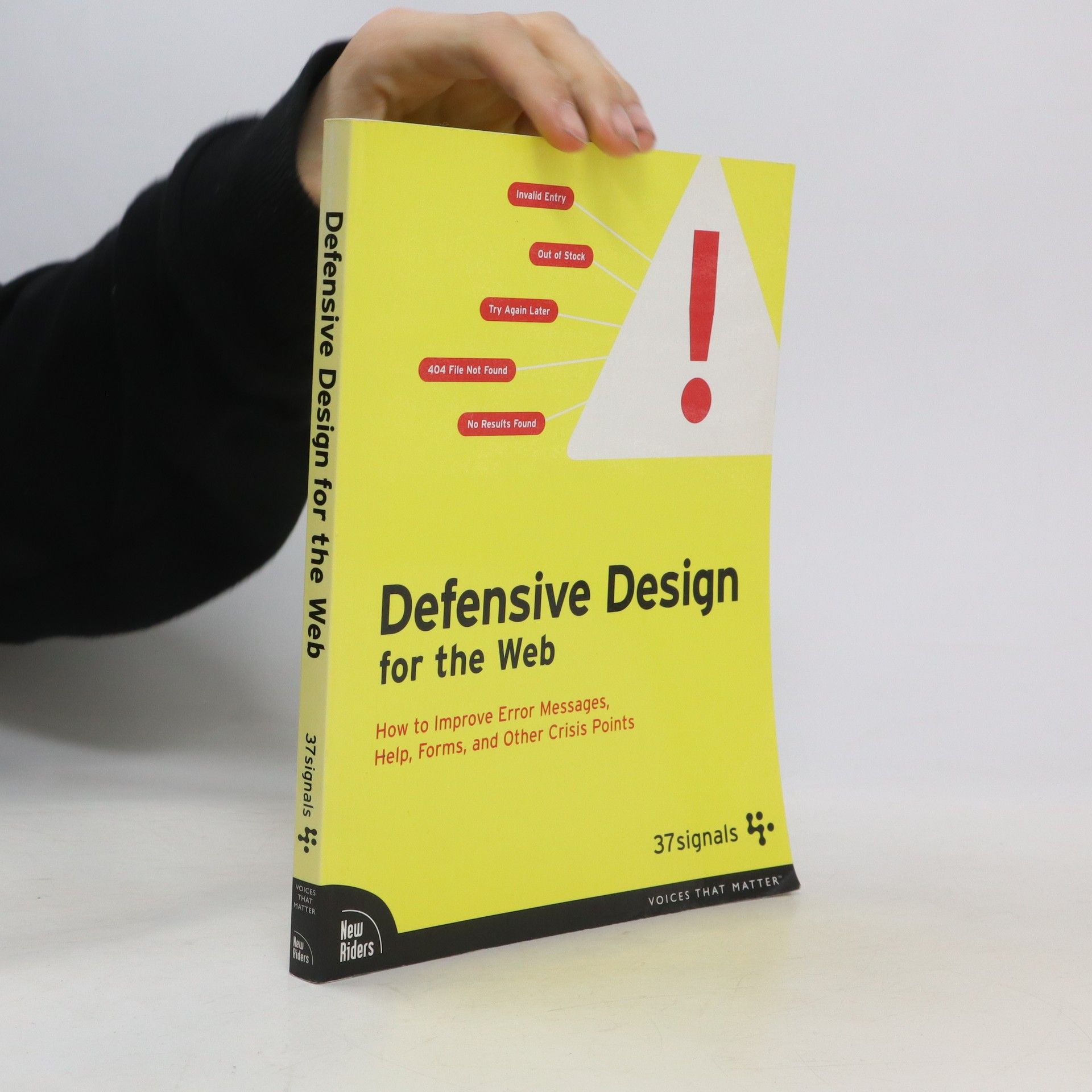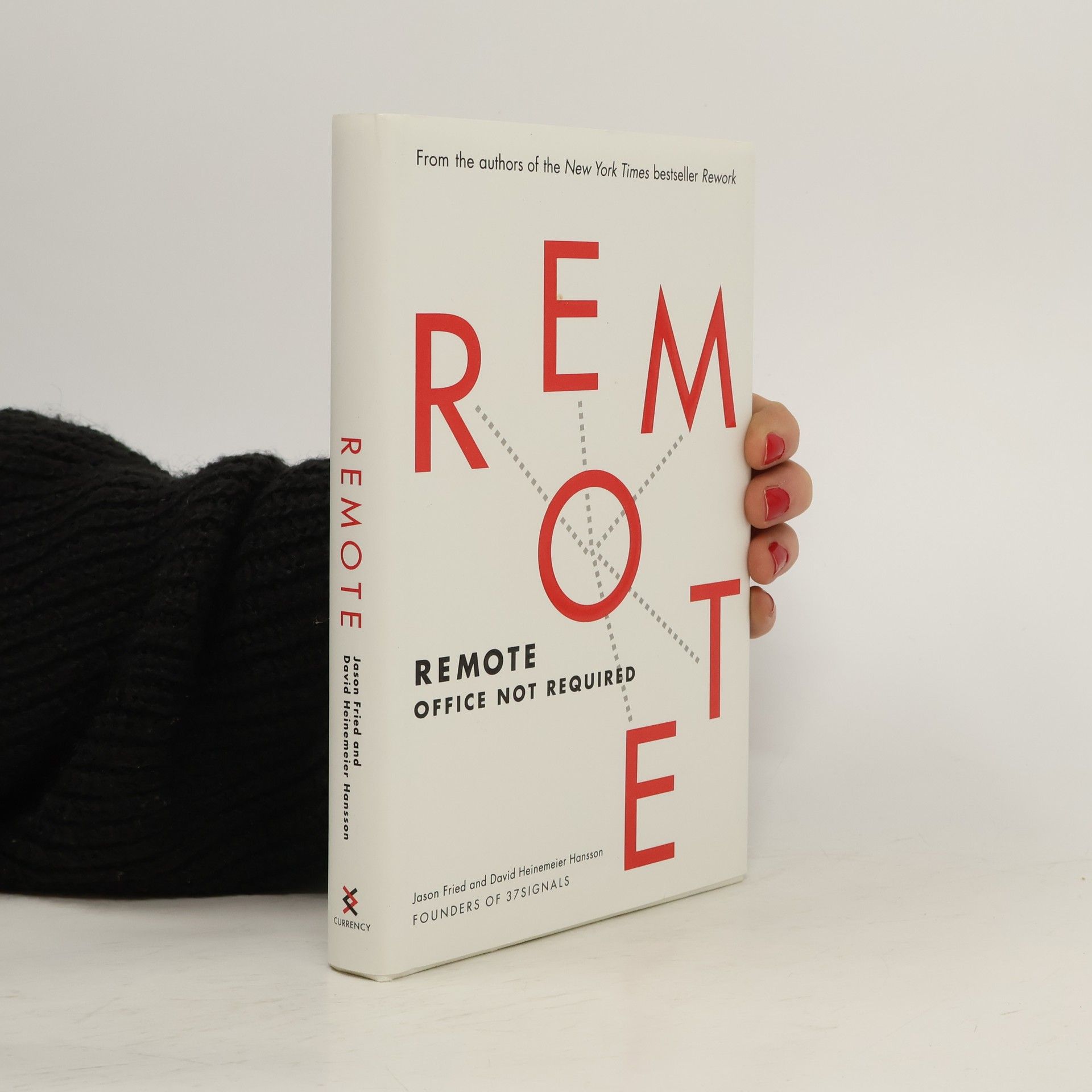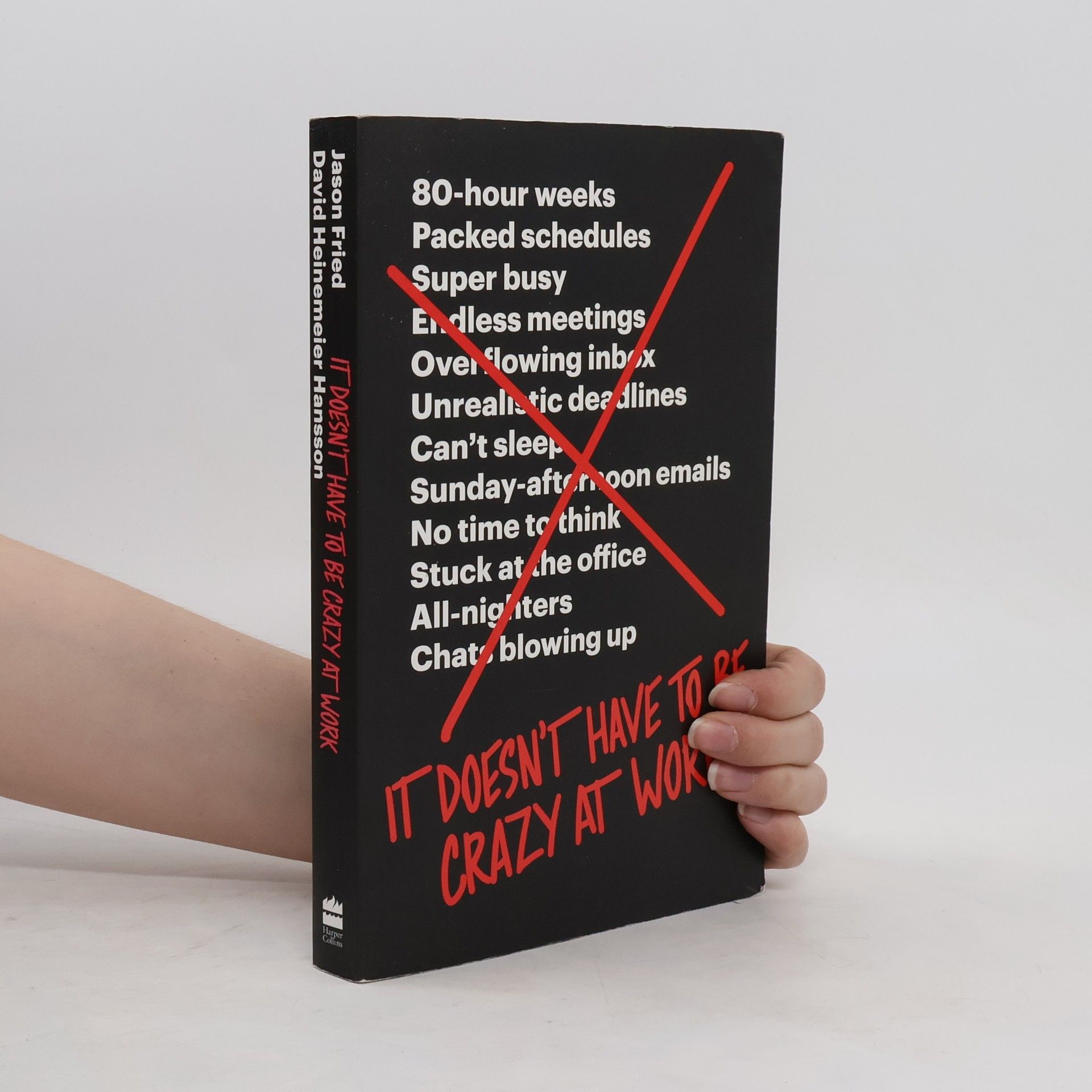Сегодня книга не имеет аналогов на рынке и характеризуется отличным соотношение "цена-качество". Откройте любую страницу и убедитесь в этом сами
Jason Fried Book order
Jason Fried is the co-founder and President of 37signals. He finds genuine value and beauty in focusing on the essential basics. Fried has co-authored all of 37signals' books and is a sought-after speaker on entrepreneurship, design, management, and software.







- 2022
- 2019
Schluss mit dem Wahnsinn im Büro
Wege zu einer entspannten Arbeitskultur
- 2018
In this timely manifesto, the authors of the New York Times bestseller Rework broadly reject the prevailing notion that long hours, aggressive hustle, and "whatever it takes" are required to run a successful business today. In Rework, Jason Fried and David Heinemeier Hansson introduced a new path to working effectively. Now, they build on their message with a bold, iconoclastic strategy for creating the ideal company culture - what they call "the calm company." Their approach directly attack the chaos, anxiety, and stress that plagues millions of workplaces and hampers billions of workers every day. Long hours, an excessive workload, and a lack of sleep have become a badge of honor for modern professionals. But it should be a mark of stupidity, the authors argue
- 2014
Práce na dálku. Zn.: Kancelář zbytečná
- 248 pages
- 9 hours of reading
Zn: Kancelář zbytečná. V knize Práce na dálku přináší Jason Fried a David Heinemeier Hansson, zakladatelé 37signals a autoři nekonvenčního bestselleru Restart, nový pohled na aktuální téma. Práce na dálku s sebou podle Jasona a Davida nese řadu výzev - a v blízké budoucnosti práci v kanceláři převálcuje. V posledních letech je model práce "pod jednou střechou" na ústupu pod vlivem nových technologií, které umožňují vytvořit virtuální pracovní prostředky prakticky kdekoli.
- 2013
"While providing a complete overview of remote work's challenges, [the authors] ... argue that, often, the advantages of working 'off-site' far outweigh the drawbacks"--Dust jacket flap
- 2010
Most business books give you the same old advice: Write a business plan, study the competition, seek investors, yadda yadda. If you're looking for a book like that, put this one back on the shelf.Rework shows you a better, faster, easier way to succeed in business. Read it and you'll know why plans are actually harmful, why you don't need outside investors, and why you're better off ignoring the competition. The truth is, you need less than you think. You don't need to be a workaholic. You don't need to staff up. You don't need to waste time on paperwork or meetings. You don't even need an office. Those are all just excuses. What you really need to do is stop talking and start working. This book shows you the way. You'll learn how to be more productive, how to get exposure without breaking the bank, and tons more counterintuitive ideas that will inspire and provoke you.With its straightforward language and easy-is-better approach, Rework is the perfect playbook for anyone who’s ever dreamed of doing it on their own. Hardcore entrepreneurs, small-business owners, people stuck in day jobs they hate, victims of "downsizing," and artists who don’t want to starve anymore will all find valuable guidance in these pages.
- 2009
Defensive design for the web
- 264 pages
- 10 hours of reading
Let's admit Things will go wrong online. No matter how carefully you design a site, no matter how much testing you do, customers still encounter problems. So how do you handle these inevitable breakdowns? With defensive design. In this book, the experts at 37signals (whose clients include Microsoft, Qwest, Monster.com, and Clear Channel) will show you how. Defensive design is like defensive driving brought to the Web. The same way drivers must always be on the lookout for slick roads, reckless drivers, and other dangerous scenarios, site builders must constantly search for trouble spots that cause visitors confusion and frustration. Good site defense can make or break the customer experience. In these pages, you'll see hundreds of real-world examples from companies like Amazon, Google, and Yahoo that show the right (and wrong) ways to get defensive. You'll learn 40 guidelines to prevent errors and rescue customers if a breakdown occurs. You'll also explore how to evaluate your own site's defensive design and improve it over the long term. This book is a must read for designers, programmers, copywriters, and any other site decision-makers who want to increase usability and customer satisfaction.
